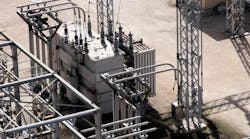President Obama 18 months ago named Stephen Burns to chair the U.S. Nuclear Regulatory Commission, which oversees government regulations over nuclear reactors and materials. The chairman, 63, recently sat down with The Energy Times for a broad discussion about nuclear power in America. Next week: Rejuvenating an Aging Fleet, Jumpstarting Modulars.
ENERGY TIMES: Several years ago, everyone awaited a nuclear renaissance in America. The new Vogtle and Summer units were to be the first of a wave of new, large base load nuclear plants. What is the status of those license applications right now, and will we ever see that renaissance?
BURNS: As for Vogtle and Summer, both of them have the combined licenses and they’re both under construction. The first units will be completed around 2018 or 2019.
They had some early issues and some bumps along the way but that seems to have gotten better. Part of the issue was with respect to the relationship with Westinghouse and some of their subcontractors. But that seems to be going better. The jury’s still out with respect to whether others that have applied for the licenses - whether they would go forward with construction. In addition to Vogtle and Summer, we’ve actually issued combined licenses for South Texas 3 and 4 on the Gulf Coast near an existing site. We issue one for Fermi what would be Fermi Unit 3 in Southern Michigan. We had 2 or 3 others that are in the pipeline where they’re continuing to pursue the combined license. The utilities plan to continue through to obtain licensing, but even for those that have received the license, for example, South Texas and Fermi, the question is when and if they will decide to break ground. What they’ve been doing is banking the site, waiting to make the business decision in several years, given the economic climate, the Clean Power Plan and things like that.
BURNS: This is the first time the Westinghouse AP1000 has been built. I would expect that with subsequent units there would be further efficiencies. As you get into this first construction of the design, that’s where some issues have arisen. There are things they need to attend to. For example, with some of the contractor quality issues in the modules in the Westinghouse design, there wasn’t a question so much of the design but execution by subcontractors. Westinghouse has come to terms with Chicago Bridge & Iron and some of the subcontractors there, and I think their belief is it will go better. Both the utilities and us will be watching that.
ENERGY TIMES: It’s been so long since the United States has constructed large baseload nuclear plants in large numbers. Do we lack a strong ecosystem of subcontractors that we might have had 20-30 years ago?
BURNS: Yeah, there is something to that. That’s one of the things utilities have to pay attention to. Worldwide that’s an issue we need to make sure we’re paying attention to.
ENERGY TIMES: What’s the future of nuclear power, at a time when there’s a lot of emphasis on renewables and energy efficiency and the smart grid? Is the United States’ technological prowess in nuclear slipping compared to other countries?
BURNS: We’re still a major player, but you have other kinds of competition. There’s still a big role for U.S. industry and U.S. regulators. While it may not be as dominant as it was in the late-1970’s, there is still an important role.
ENERGY TIMES: Would you advise your grandchildren to consider a career in nuclear power 20-30 years from now?
BURNS: Actually, I would.



